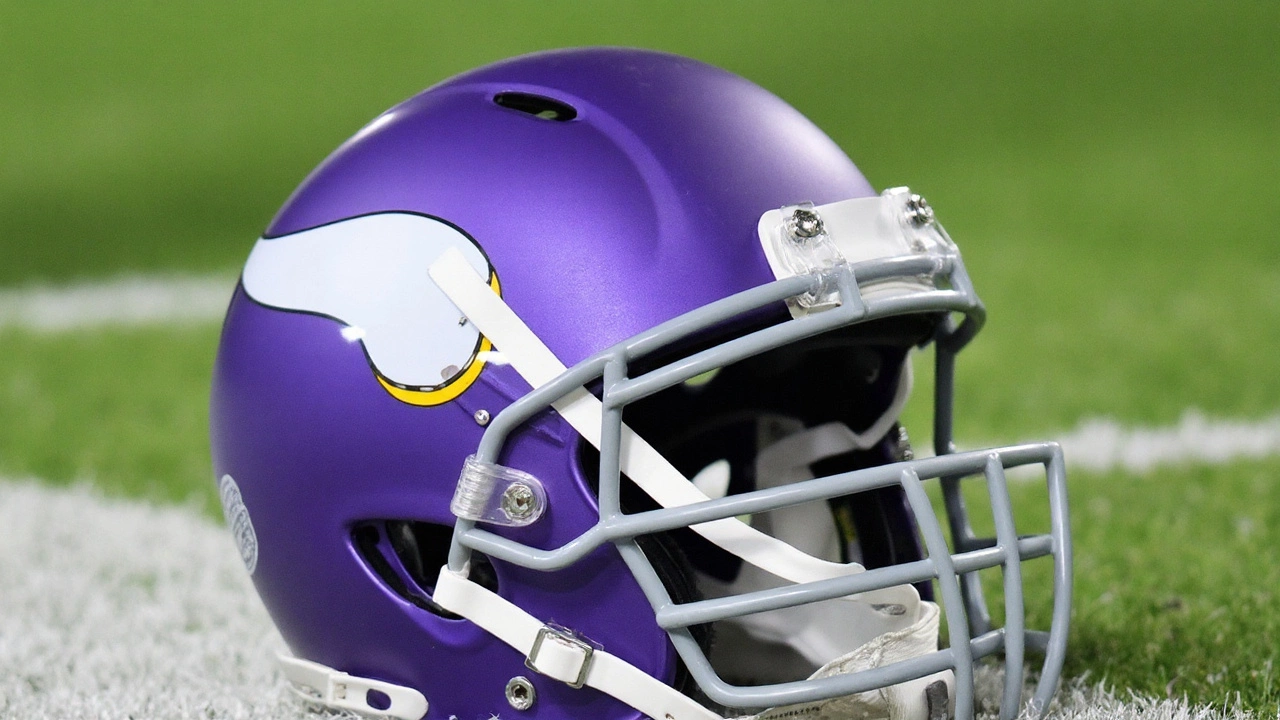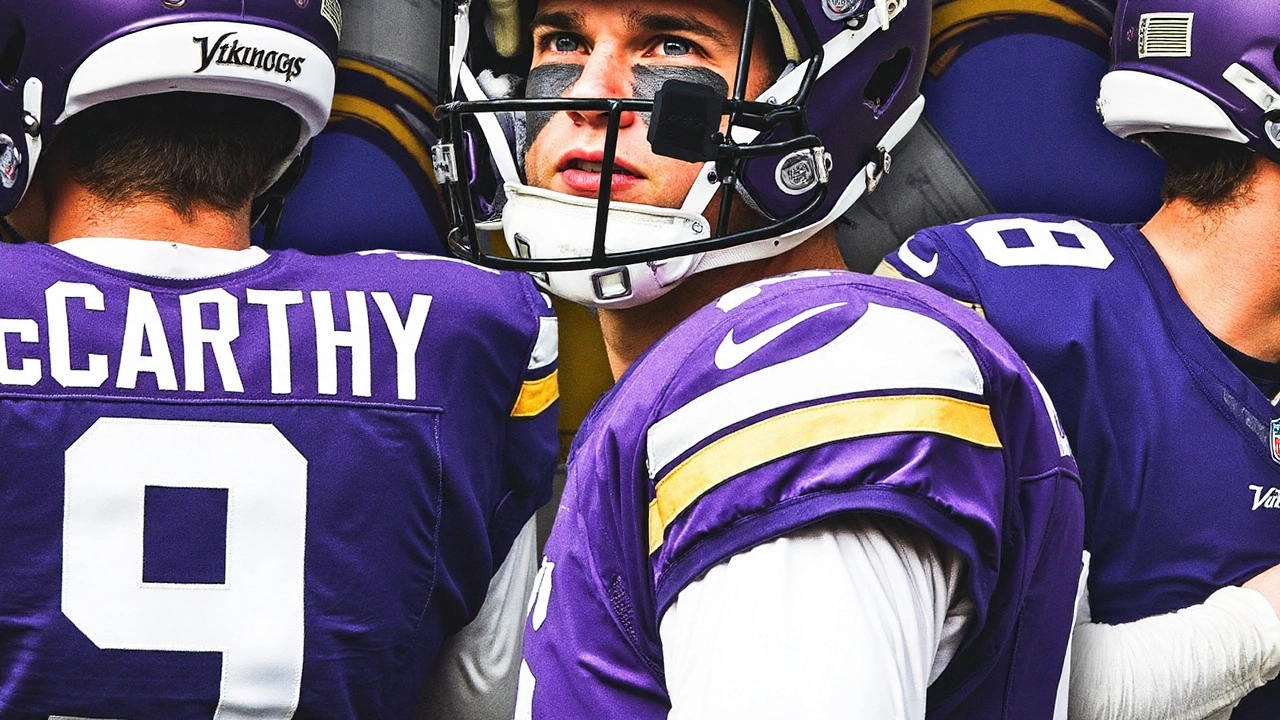A calm routine before the storm
A few hours before kickoff in Chicago, J.J. McCarthy finds a quiet slice of turf beneath a goalpost, drops into a cross-legged seat, and shuts the world out. Eyes closed. Breathing steady. The Vikings’ quarterback is 22 years and five months old, making his first NFL start in a stadium less than 20 miles from home, replacing a veteran who just helped Minnesota win 14 games. This is the kind of moment that can overwhelm a young passer. He meets it with silence.
McCarthy’s pregame is part ritual, part reset. He carries a folding chair into locker rooms so he can take short meditative breaks before kickoff and, if he needs it, at halftime. He calls them “mental pauses.” The point is simple: clear the noise, control what you can, and return to the next snap with a fresh mind. That calm approach isn’t a marketing angle, though he’s leaned into it with a partnership with ALO, the yoga and athletic brand that pushes intentionality and presence. He says the message matches the practice—be deliberate in how you move and think.
The mindfulness piece is only one side of the story. The other is almost obsessive organization. On his iPad, McCarthy tracks color-coded bullet points—opponent tendencies by down and distance, pressure patterns, preferred coverages, and how coaches think in critical moments. For this week, that meant digging into Bears defensive coordinator Dennis Allen’s situational habits and schematic history. He files notes on philosophy and employer history too, which sounds like overkill until you remember everything gets faster on Sundays. Players who slow the game down often do it with prep, not just talent.
Teammates see the duality. In the building, McCarthy is buoyant and approachable. He bounces between position groups, checks in with coaches, and keeps the mood loose. Receivers and linemen talk about his “bubbly” ease. Then they’ll point to something else—how his personality shifts once he ties the chin strap. Justin Jefferson says he has a “dog mentality,” that “killer mode” you only notice when it’s full speed. Right tackle Brian O’Neill swears McCarthy’s best practice work showed up when things got competitive, like in joint sessions against New England.
Veteran safety Harrison Smith appreciates a different trait: independence. He calls McCarthy a guy who thinks for himself and says what he believes without posturing. That matters in a huddle with All-Pros and Pro Bowlers. Quarterbacks can’t fake the room. They either run it or they don’t. Despite being one of the youngest non-rookies on the roster, McCarthy has connected with both sides of the ball because he doesn’t force the role—he just treats it like work.
Head coach Kevin O’Connell frames it another way. There are guys who look great in a controlled practice environment, and then there are gamers. He puts McCarthy in the latter group: players who either take their level up under the lights or hold steady when it counts. That distinction isn’t a compliment for show. It guides how a staff scripts the early calls and trusts a quarterback to make fast, clean choices when the pocket changes.
McCarthy keeps returning to the same answer when you ask about his edge as he takes over the franchise faceplate: his mind. Not the strongest arm or the fastest legs—though he’s comfortable throwing on the move and changing arm angles when needed—but how he thinks. He believes the right mental state unlocks better decisions, better timing, and the calm to handle chaos. That outlook stayed intact even after a knee injury ended his rookie year before it started. Gratitude, he says, let him use the downtime to study how the league really works.
He’ll need all of it in Chicago. Soldier Field can be windy, loud, and unforgiving for a first start. The pregame meditation routine is a way to shrink the moment. The notes on Allen’s tendencies are a way to anticipate and remove surprises. The folding chair in the locker room is a reminder that nothing is permanent—not a hot start, not a bad series, not even the pressure he carries as the next big thing.

Flip the switch, take the shot
Off the field, McCarthy keeps it steady—respectful, humble, calm. Between the lines, he’s fine with a little edge, a little talk, and a lot of competitive heat. That contrast is obvious to the people around him. It’s not an act; it’s how he organizes his week. Move gently Monday through Saturday, then spike the tempo on Sunday. He doesn’t hide from the emotion that comes with this job. He channels it.
How does that translate to an NFL debut? Expect a plan that keeps his eyes clean early and lets him play fast. O’Connell’s background with quarterbacks usually shows up in the first 15 plays: motion to define coverage, quick-game to build rhythm, movement throws to change launch points, and a few layered play-action shots once the run threat is believable. The goal isn’t to protect McCarthy. It’s to give him manageable pictures so his processing can show up.
McCarthy’s film notes focus on moments that decide games: third-and-medium, red zone snaps, two-minute drives. Defenses don’t blitz the same way on second-and-5 as they do on third-and-9. They disguise more near the goal line than they do in the open field. His notebook reflects that. He studies what coordinators prefer when they absolutely have to get off the field, and he tracks how those preferences change with personnel on the grass.
His teammates see the value. Receivers want timing and trust. Linemen want urgency and clarity. Backs want protection alerts that make sense. The defense wants a quarterback who can flip a field position battle with one smart throw. That’s the leadership test he faces now—turn the prep into conviction. You don’t convince a locker room with slogans. You do it by stacking clean series, by bouncing back after a bad play, by making the right check in a loud stadium when everybody else is guessing.
There’s also the weight of the context. McCarthy stepped in after Sam Darnold’s comeback season, a 14-win run that reset expectations in Minnesota from “could be solid” to “should contend.” The conversations now are bigger—NFC North, the conference, a shot at the franchise’s first Super Bowl. You can’t hide from that when you’re the starting quarterback. If anything, it’s why he leans even harder on his routine. The visual of a young QB meditating under a goalpost or unfolding a chair at halftime isn’t about optics. It’s proof he’s built a process he trusts regardless of the scoreboard.
Coaches call it “gamer” for a reason. The league is full of players who look electric on Wednesday and Thursday, then fade when the lights come on. The rare ones reverse it. McCarthy’s college tape showed an instinct for situational football and the ability to make throws from different platforms when a play broke. That doesn’t automatically carry over, but it tells you who he is when a pocket gets muddy or the timing is half a beat off. He finds an answer.
There are things you can’t rehearse. The first true third-and-long behind a silenced cadence. The first time a free rusher shows and you don’t like the hot route. The first interception that wasn’t your fault but will go next to your name. Mindfulness doesn’t erase those moments. It makes space for the next one, so the game doesn’t avalanche. That’s the job for a young quarterback—don’t let one mistake turn into three.
Inside the building, the relationship piece is ahead of schedule. McCarthy has won over the huddle not with volume but with presence. He’s energetic at practice, a little goofy in the downtime, and direct when it’s time to run the show. Jefferson put it simply: the kid gets that he’s the starting quarterback and carries himself that way. That comment sounds basic, but it’s not. Plenty of young passers wrestle with the role. He’s leaned into it without overplaying it.
It helps that the Vikings don’t need him to be a superhero on snap one. They need him to be himself—prepared, composed, and decisive. The throws on the move will come. The shot plays will be there. What sets the tone is his mind, the same tool he points to when people ask for a scouting report. If he keeps stacking decisions, the physical stuff opens up the middle of the field, buys the line some rhythm, and gives the defense a chance to play with a lead.
Watch the small details Monday night. Does he get the ball out on time on the first third down? Does he adjust protections after the first pressure look shows up? Does he find calm after a negative play, or does the tempo speed up and strain his footwork? That’s where his meditation and color-coded notes matter. They aren’t for Instagram. They’re practical—habits designed to keep him in the moment when a drive tries to unravel.
There’s a reason veterans like Smith endorse him. It’s not because he’s perfect right now. It’s because he owns the room in a way that lets everyone else do their jobs. Offensive leaders want to feel like the quarterback is the thermostat, not the thermometer. McCarthy’s calm sets the temperature, and his competitive side raises it when it’s time to take a shot.
He’ll jog to that goalpost again before kickoff, sit down, and breathe until the stadium disappears. After that, all the quiet turns into fire. That switch—calm to edge, prep to instinct—is why Minnesota is handing him the keys.
The Vikings don’t need a savior. They need a steady pilot who can be a little ruthless when the play calls for it. McCarthy has spent months building toward that version of himself. Now he gets to show it, not in a bubble of perfect practice reps, but in a real game, in a familiar city that won’t make any of it easier.
 Sep, 9 2025
Sep, 9 2025
